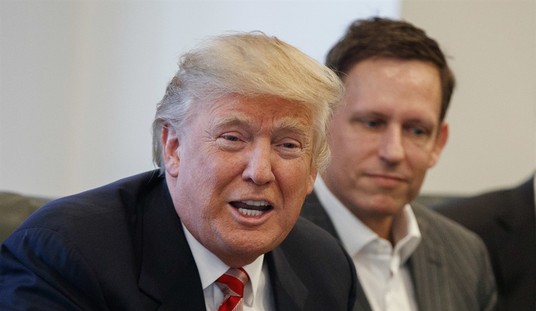
Investigative journalist John Solomon has followed the Russian collusion investigation closely from the beginning. Over the coarse of his long career, he has developed an extensive network of connections inside of the intelligence community and has broken many stories along the way. I have posted on a number of them.
In anticipation of the release of DOJ Inspector General Michael Horowitz’ report on FBI FISA abuse in the 2016 election, Solomon has compiled a list of what he expects will be the most significant revelations.
He believes the report itself will serve as a “roadmap for a much longer process of holding the investigators to account.”
1. The scope of failure and misconduct
Solomon expects the IG to identify “6-10 failures, mistakes and acts of misconduct.” These would include FBI lawyer Kevin Clinesmith’s alteration of an April 6, 2017 email used to support the second renewal of the warrant to spy on Carter Page on April 7, 2017, the FBI’s failure to disclose that the dossier was unverified and represented opposition research paid for by Hillary Clinton and the DNC. Last week, we learned that the FBI had interviewed several of Christopher Steele’s sources in January 2017 and found that the new information “differed” from what was written in the dossier. This is expected to be revealed.
2. Exculpatory evidence withheld
Junior Trump campaign advisor George Papadopoulos was targeted by FBI informants Stefan Halper, Joseph Mifsud and Azra Turk in 2016. During an interview with Solomon, Papadopoulos recalled an interaction he’d had with Halper in September 2016. Papadopoulos said, “He was there to probe me on the behest of somebody else. He said something along the lines of, ‘Oh, it’s great that Russia is helping you and your campaign, right George?’ I think I told him something along the lines of, ‘I have no idea what the hell you are talking about. What you are talking about is treason. And I have nothing to do with that, so stop bothering me about it,’ ”
According to Solomon, Papadopoulos’ exculpatory remark does not appear on the initial FISA document, nor on any of the renewals.
Solomon adds that “a second revelation to watch is whether the FBI possessed similar evidence of innocence involving Page that was not disclosed.”
3. Derogatory information about informant Christopher Steele
A footnote on the FISA application allegedly states that the FBI was “unaware of any derogatory information” about Christopher Steele. That is false.
The FBI received at least three warnings which should have made them question Steele’s wisdom, his credibility or his motives. In Congressional testimony, DOJ official Bruce Ohr, who acted as a backchannel between Steele and the FBI, said he informed the FBI “he suspected Steele’s intelligence was mostly raw and needed vetting, that Steele was working with Hillary Clinton’s campaign in some capacity and appeared desperate to defeat Trump in the 2016 election.”
Solomon writes that his “Congressional sources have reported that during a recent unclassified meeting they were told the British government flagged concerns about Steele and his reliance on “sub-sources” of intelligence as early as 2015.”
Eight days before the FBI submitted their first FISA application warrant, State Department official Kathleen Kavalec warned the FBI that Steele harbored intense hatred for Trump and that she knew some of his information to be false.
4. News leaks as evidence
The FBI has been accused of “using news leaks to create or cite evidence in courts.” FBI Deputy Director Andrew McCabe was recommended for criminal prosecution by the IG in a 2018 report for lying about a leak to the media.
In the case of the FISA application, Steele briefed Yahoo News reporter Michael Isikoff on the dossier. Isikoff then published an article based on Steele’s information in late September 2016.
The FBI used Isikoff’s article as corroboration for the dossier on their FISA application. This is known as “circular reporting.”
5. Verification under the Woods Procedures
Solomon writes:
For years the FBI has been required to certify to the FISA court that all information submitted in a warrant application was “verified” under the so-called Woods Procedures. Lawmakers with access to classified information have said for months they fear a key allegation gleaned from Steele’s dossier – that Carter Page had met with two senior Russian officials close to Putin in summer 2016 – was never verified when it was used as evidence in the FISA warrant. We know from Special Counsel Robert Mueller’s report that those contacts alleged by Steele never happened. Horowitz should provide valuable insight on this issue.
6. Steele dossier heartburn
Former FBI Director James Comey has repeatedly said, under oath, that the dossier was “salacious and unverified.” He told the same to President-elect Trump during the infamous January 6, 2017 briefing. Yet, in October 2016 and in January, April and July of 2017, the FBI presented the dossier as being verified. Solomon said the report will likely tell us “who else besides Comey shared that distrust and how early did those concerns about the dossier emerge.” He writes, “Congressional Republicans have demanded the release of a series of email chains they claim might show FBI and DOJ officials had similar heartburn about the reliability of the document. In addition, the FBI kept a spreadsheet analyzing the claims in Steele’s dossier. Sources who reviewed it have said the vast majority of the dossier’s claims fell into one of three categories: debunked, could not be verified or traced to open-source intelligence typically found on the Internet.”
7. What investigators learned from Steele
Steele writes:
We know from State Department memos that more than a week before the first FISA warrant was obtained, Steele visited with senior State officials and acknowledged he was working with the FBI, leaking to news media and had an election day deadline to get his information public. Likewise, Steele similarly indicated to senior Justice official Bruce Ohr as early as summer 2016 he was desperate to stop Trump from being elected and was working in some capacity with Trump’s rival, Hillary Clinton. So here is a big development to watch: What did Steele tell the FBI about these very important issues? And when did the FBI first learn he might be leaking? The FBI ended its informant relationship with Steele on Nov. 1, 2016, a little over a week after using his dossier to support the first FISA warrant. And the reason they did so was because agents had concluded he improperly leaked to the news media. But did the FBI know or have reason to suspect that problem before the first FISA warrant? Stay tuned.
I would add that Steele was interviewed by Team Horowitz in June 2019. Shortly afterward, Horowitz announced he was extending his investigation.
On his podcast today, Dan Bongino recounted an interesting story he has heard from several sources. Shortly before the election, the FBI leaked a story to the New York Times. The article, entitled “Investigating Donald Trump, F.B.I. Sees No Clear Link to Russia,” was published on October 31, 2016. It basically said the FBI had found no clear evidence linking candidate Trump to Russia.
On November 1, the FBI fired Christopher Steele ostensibly for leaking information to the media. Yet weeks later, the New York Times was back to reporting about Trump’s Russia ties and the FBI continued to receive information from Steele.
Bongino’s sources have said this was done intentionally. The FBI, sure that Hillary Clinton would win the election, leaked the story and fired Steele so that, in the event they were ever blamed for causing Trump’s defeat, they could point to these two events to deny those accusations.
8. Bias, intent and incompetence
We were all stunned in June 2018 that Horowitz failed to find that FBI agent bias played a role in Hillary Clinton’s exoneration for what should have been a clear cut case of mishandling classified material. Rumors from the New York Times last week indicate we might be surprised again when Horowitz reaches a similar conclusion.
9. Criminal referrals and disciplinary actions
Will any of those who perpetrated this fraud will held accountable. Last month, it was rumored that at least two criminal referrals would be made. Solomon writes that he, “would expect at least one, if not more, referrals will have grown out of the Horowitz’s FISA report, which is likely why Durham’s probe recently was converted from administrative to criminal. Other remedies for accountability could fall into the disciplinary category.”
10. Lessons Learned
Solomon’s questions:
What measures can be taken now to ensure this never happens again?
Do FBI and DOJ need new rules and thresholds for opening probes of candidates and campaigns?
Does the FBI system for vetting informants need to be fixed?
Does the FISA court need a public advocate to protect the liberties of Americans targeted for warrants to create a check and balance on the FBI?
Do the Woods procedures for verifying evidence for a FISA warrant need revision or overhaul? These are weighty questions that the FBI, DOJ and Congress almost certainly will face in the coming months.
None of us expect too many fireworks to come from the Horowitz report. After all, Horowitz is a Democrat who has been entrenched in the deep state swamp for years.
Last week, the Washington Post reported another “leak” from the IG report. They wrote that the IG concluded the FBI had adequate cause to launch its Russia investigation. This is a point of disagreement between Horowitz and Attorney General William Barr.
On Monday, many of these questions will be cleared up. Then, we must wait for the results of the report that matters – U.S. Attorney John Durham’s now criminal investigation into the origins of the Trump/Russia collusion probe.













Join the conversation as a VIP Member